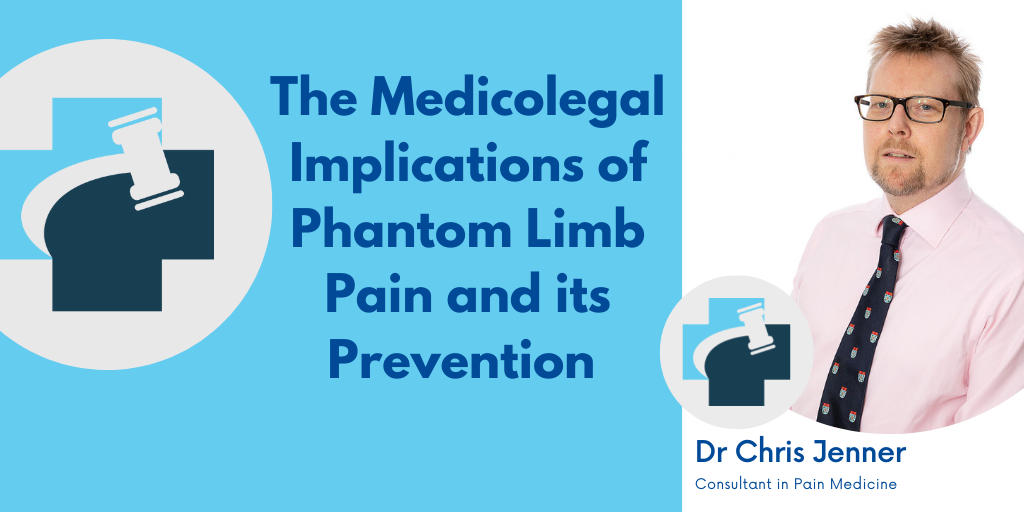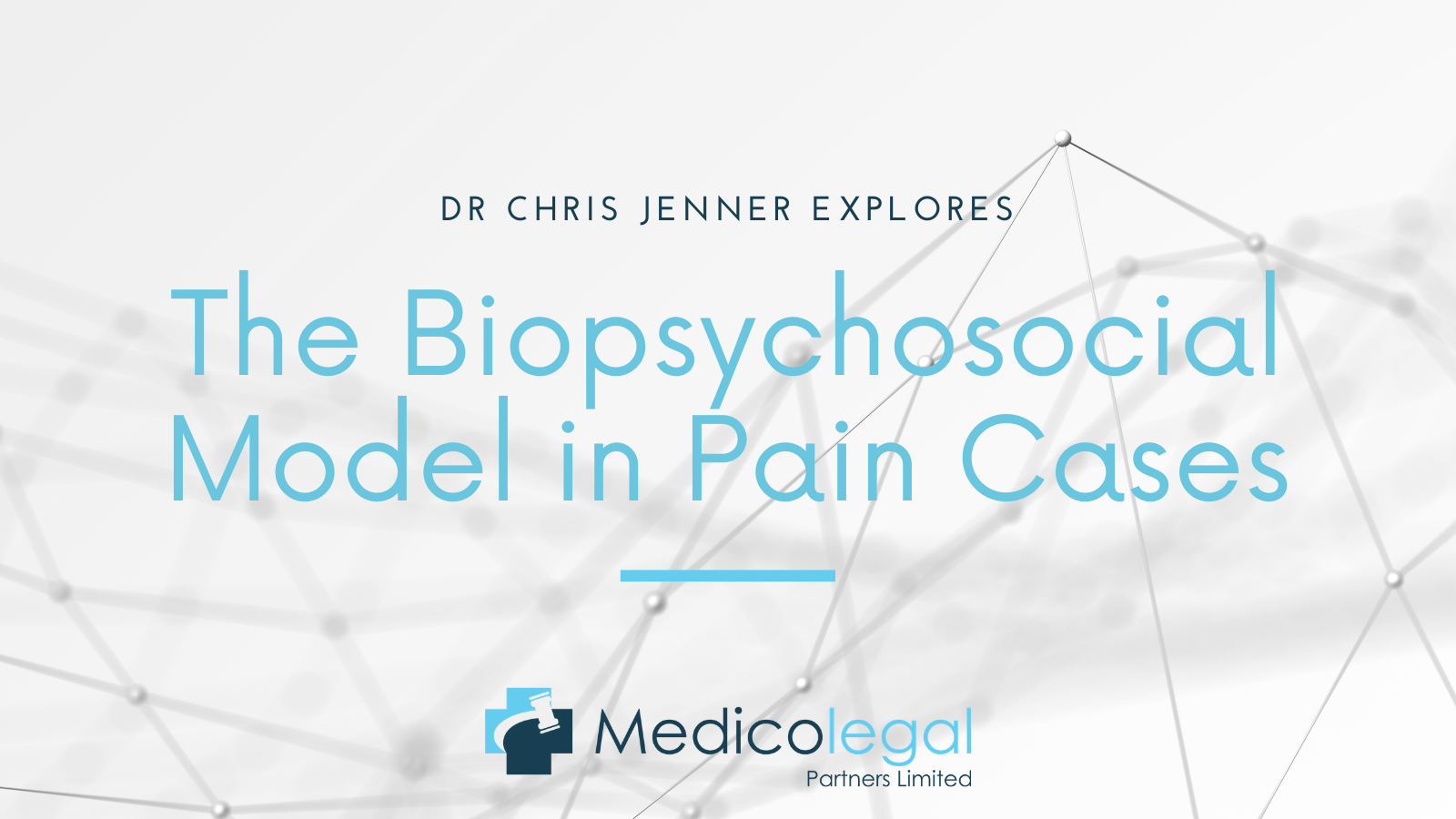The Medicolegal Implications of Phantom Limb Pain and its Prevention

The term ‘phantom limb pain (PLP)’ describes the painful sensations experienced in a part of the body that has been amputated, which persist after complete healing of the associated surgical wound. It is an extremely common phenomenon, occurring in up to 85% of patients immediately after amputation and persisting for 6 months or more in nearly 70%. Even after several years, around half of all amputees still experience painful sensations in the affected area. Although most commonly associated with the amputation of an arm or leg, phantom limb pain can follow the removal of any part of the body. Predisposing factors include a history of pre-existing pain before surgery, upper limb amputation and female gender.
The causes of phantom limb pain are not yet fully understood, although it is assumed to be the consequence of damage to the central and/or peripheral nervous systems. After amputation, the motor cortex of the brain remains intact and still perceives signals as if they were coming from the absent limb. This leads to a conflict between motor commands to the limb and somatosensory input from it, giving rise to the sensations of a phantom limb. It is also likely that the areas of the brain that contribute to the experience of pain undergo changes and reorganisation. The pre-existence of pain in the affected limb appears to influence the development of PLP, perhaps through the establishment of pain memory. The importance of this factor is demonstrated by the fact that diabetics and paraplegics, who already have reduced peripheral nociceptive inputs and therefore experience lower overall levels of pain, report a decreased likelihood of developing PLP.
Psychological factors, such as emotional stress, do not appear to contribute to the development of PLP, and the psychological profile of most patients with PLP is normal. However, some clinicians still believe that PLP is a psychosomatic manifestation of the grief felt at the loss of the limb, which the patient has failed to resolve. This viewpoint may explain the wide divergence in the reported rates of PLP in different countries. It is true, however, that psychological factors may affect the course and severity of the pain. There is a significant relationship between stress and the onset and exacerbation of episodes of PLP, and patients who received less support from family or friends before the amputation tend to report a greater impact of PLP. Furthermore, patients with poor coping mechanisms and those who have a tendency to catastrophise are likely to experience more frequent and more disabling episodes of pain.
Currently, there is no universally effective treatment or preventative strategy for PLP, and many of the existing therapies do not take account of the underlying mechanisms of the condition. The association between PLP and pre-operative symptoms suggests that early intervention could be vital in preventing the development of the condition, as it may prevent the transition from acute pain to chronic symptoms. As it has been assumed that ligation of the large nerve fibres may result in PLP, alternative surgical techniques may be useful in preventing the condition. Compared to traction neurectomy alone, pre-emptive coaptation and collagen nerve wrapping reduces both post-operative pain and the incidence of PLP, while techniques such as targeted nerve implantation or traction neurectomy may help to prevent or treat neuroma formation, which might also give rise to the condition.
Pre-emptive analgesia, which is usually administered before and during surgery, attempts to prevent chronic pain by intervening before acute pain occurs. The role of epidural analgesia for pain relief in the post-operative period is well-known, but its use as a preventative strategy for PLP is less clearly established. One possible mechanism is a reduction in the reorganisation of the nervous system. It may also work by blocking peripheral nociceptive input from reaching the spinal cord, thus preventing pain memories forming in the brain and reducing the likelihood of PLP. However, results from studies have been conflicting. While most have failed to confirm the role of epidural analgesia as a long-term preventive strategy, results from studies of pre-operative epidural LA, with or without adjuvant therapies such as opioids, ketamine or calcitonin, have been more encouraging. This may be due to the fact that an existing pain memory that has already caused changes in the brain’s cortex is unlikely to be affected by treatment, whereas prevention of entirely new changes is still feasible.
Although psychological factors do not cause PLP, therapies to address them may have a role in helping patients to cope by modifying their perception and experience of the pain. For instance, cognitive behavioural therapy allows patients to reshape their beliefs and develop coping mechanisms that may be beneficial in reducing the impact of PLP.
Despite the frequency of PLP after amputation, preventing the condition is difficult. The development of new therapies requires a better understanding of the effects of nerve transection. As every patient’s experience of pain is different, the best current approach to prevention is likely to be multidisciplinary. Identification of high-risk patients and early provision of an individualised programme of preventive therapies should offer the best outcome for the patient and reduce the risk of future litigation.
Further reading:
Ahuja, V., Thapa, D., & Ghai, B. (2018). Strategies for prevention of lower limb post-amputation pain: A clinical narrative review. Journal of Anaesthesiology, Clinical Pharmacology, 34(4), 439–449. https://doi.org/10.4103/joacp.JOACP_126_17
Flor H. (2002). Phantom-limb pain: characteristics, causes, and treatment. The Lancet. Neurology, 1(3), 182–189. https://doi.org/10.1016/s1474-4422(02)00074-1



